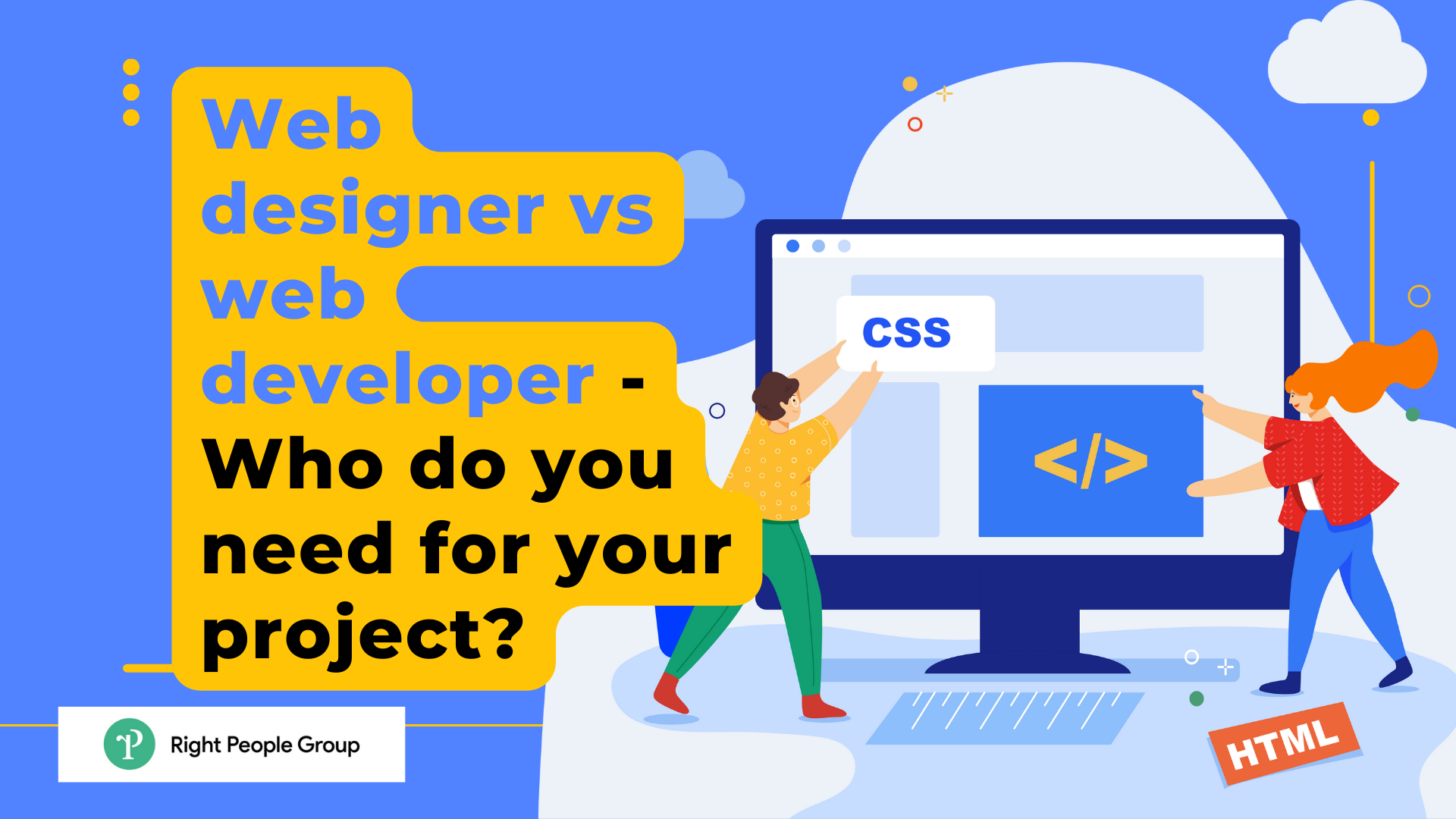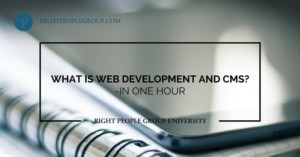In the digital landscape, understanding the subtle differences in job roles like web designer vs web developer is essential for the success of your project. This guide will help you navigate the intricacies of web design vs web development, providing you a pathway to make an informed decision.
Understanding the roles
Web designers
Web designers create an aesthetic and functional layout for websites, but they don’t build the website themselves.
Visual design: They ensure that websites look engaging and user-friendly. This includes selecting the right colors, typography, and overall design aesthetics.
User Experience (UX): They focus on the user journey, making sure that navigating the website is intuitive.
Tools: Most web designers use design software like Adobe Photoshop, Illustrator, and Sketch to visualize and create their designs.
Web developers
Web developers play the role of builders. They transform the designs into live, interactive websites.
Web developers need to be knowledgeable in coding and programming languages.
But not all web developers do the same thing. There are many specialized types of developers.
Here are some examples of web developers:
Front-end Developer: Front-end developers work on the user interface or the visual part of the website that users see and interact with, using languages like HTML, CSS, and JavaScript.
Back-end Developer: Back-end developers handle the server-side of web applications, manage databases, and ensure data flow.
Full Stack Developer: A combination of both front-end and back-end development.
DevOps: Focuses on the deployment, infrastructure, and continuous integration/continuous delivery processes.
Mobile Developer: Specializes in creating applications for mobile platforms like iOS and Android. They might be further categorized as:
iOS Developer: Uses Swift or Objective-C programming languages for Apple platforms.
Android Developer: Uses Kotlin or Java programming languages for Android platforms.
When do you need a web designer or web developer?
Depending on the project, you might need a combination of web designers and web developers.
For instance, a large-scale e-commerce site might involve a web designer and web developers working collaboratively.
While web designers focus on conceptualizing and creating the design, web developers focus on user experience as they bring this design to life on the web. They ensure the design is interactive, responsive, and user-friendly.
Full-stack developers can handle web design, but it might not be their primary expertise. If high-end, specialized design is a priority, a dedicated web designer is often preferable.
1. Visual design and user experience (UX)
Web designer
Web designers work on the visual layout, color schemes, typography, and overall aesthetics of a website. They often use tools like Adobe Photoshop, Illustrator, and other design software.
A web designer sets the visual tone and feel of the site, which is crucial for brand image and initial user impressions.
2. User interface (UI) and user experience (UX)
Front-end developer
Front-end developers implement the visual designs into interactive web pages. They use coding languages like HTML, CSS, and JavaScript. They ensure the site looks good on various devices and browsers.
While they aren’t typically responsible for the initial design, they do play a pivotal role in user experience, ensuring the design is effectively translated to a functional website.
The way users interact with a site’s design (its buttons, links, responsiveness) is crucial for user satisfaction and functionality.
3. Behind-the-scenes functionality
Back-end developer
Back-end developers focus on server-side logic, databases, and application infrastructure. They ensure that the data users see on the front-end gets properly saved, updated, and managed in the back-end using languages like PHP, Ruby, and Python.
Any website with dynamic content, user profiles, e-commerce capabilities, or other database needs requires a back-end developer.
4. Juggling both design and development
Full-stack developer
Full-stack developers have skills in both front-end and back-end development.
However, it’s worth noting that while they can handle the breadth of website development, they might not specialize in the nuanced details of web design. They might be able to create a functional design, but it might not be as refined or tailored as a specialized web designer’s work.
They’re valuable for projects where integrated knowledge of the entire web development process is beneficial.
Hiring in-house vs. freelancers
As you pave the path for your web project, another vital aspect to consider is whether to opt for in-house consultants or freelance consultants. Each has its own merit, and picking the right one can be instrumental in steering your project to success. Let’s dive in:
1. In-house consultants
Advantages:
Continuous collaboration: Having a consultant onsite allows for real-time feedback and a cohesive working environment.
Alignment with company culture: In-house consultants can be more aligned with your company’s values, leading to a product that embodies your brand perfectly.
Available for long-term projects: For projects spanning a considerable time, an in-house consultant can offer consistency and ongoing support.
Considerations:
Higher costs: The financial investment for in-house consultants is generally higher considering salaries and benefits.
Limited to one expertise: Often, in-house consultants bring in a singular area of expertise, which might limit diversity in ideas and skills.
2. Freelance consultants
Advantages:
Skill variety: The freelance market offers a plethora of experts each harboring a unique skill set, allowing you to choose the perfect fit for your project’s requirements.
Cost-effective: Employing freelance consultants can be a more economical option, avoiding overhead costs tied to a full-time employee.
Flexible contract terms: You can decide on the contract’s length and terms, giving you better control over the project’s timeframe.
Considerations:
Coordination: Being offsite can sometimes create hurdles in seamless communication and might demand extra effort in coordination.
Varied approaches: Employing different freelancers over time can lead to divergent styles and approaches, potentially affecting the project’s consistency.
Making the decision
Project nature: Short-term projects or ones requiring highly specialized skills can benefit greatly from freelance consultants. Conversely, for projects with a longer timeline needing a consistent approach, in-house consultants prove to be beneficial.
Budgetary constraints: While keeping an eye on the budget, freelancing can offer a more flexible approach, though the additional effort in management should be factored in.
Team dynamics: Understand the dynamics of your current team; sometimes adding an in-house consultant can foster greater unity and collaborative spirit, while other times bringing in a fresh freelance perspective can be more beneficial.
Looking for a web design or development consultant?
At Right People Group, we know that finding the right fit can be a tough job, but with Right People Group, it doesn’t have to be. We’ll help you find the right freelance web development or web design consultant who has the technical skills for your project and is a great fit for your team.
Our process is quick, efficient, and best of all, free. We’ll chat and understand what you need, then we’ll recommend a consultant who really matches those needs. There is no obligation to hire a consultant through us, so you have nothing to lose by getting in touch.
Get in touch by completing the form on this page.
Conclusion
Navigating the path of web developer vs web designer can be complex, yet understanding the distinct roles and responsibilities can lead you to make an optimal choice for your project. Remember, the essence lies in aligning your project needs with the expertise of web designers or web developers to create a perfect product. It’s about crafting a space where creativity meets functionality, paving the way for a successful project. Choose wisely, as the right choice can be the linchpin to your project’s success.



